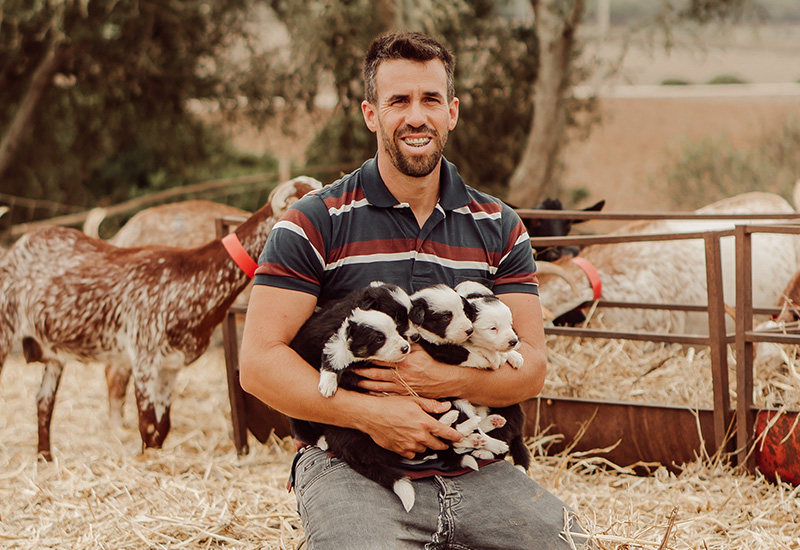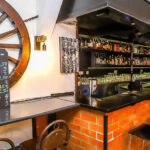As I drive west out of Vila do Bispo, the countryside opens up into wide expanses of gently undulating land. The fresh green pastures are still vibrant from the winter rains and decorated with the yellow hues of the clover, which covers the landscape. It feels like a world away from the buzz of the Algarve coastline. Just a few kilometres from the bustle of the seaside towns, it is as if you have gone through a wormhole into another land, another time, another pace of life.
Pulling off the tarmac road, I navigate a dirt track, my car bumping along between a field packed with goats on one side and a herd of chocolate-brown cattle on the other. Their bells and the barks of a pack of sheepdogs are the only sounds to break the silence.
I am here to meet Roberto Luz, who owns the herd of goats on my left, to learn more about farming and the ancient tradition of goat cheese making that is teetering on the edge of extinction in this forgotten rural idyll.
At just 37, Roberto is energetic and passionate about what he does, but his face is also etched with frown lines, evidence of the worry and hardship that this lifestyle brings. With more and more EU regulations and increasing costs to navigate, it is the passion and the determination to keep alive the family tradition that drives him forward.
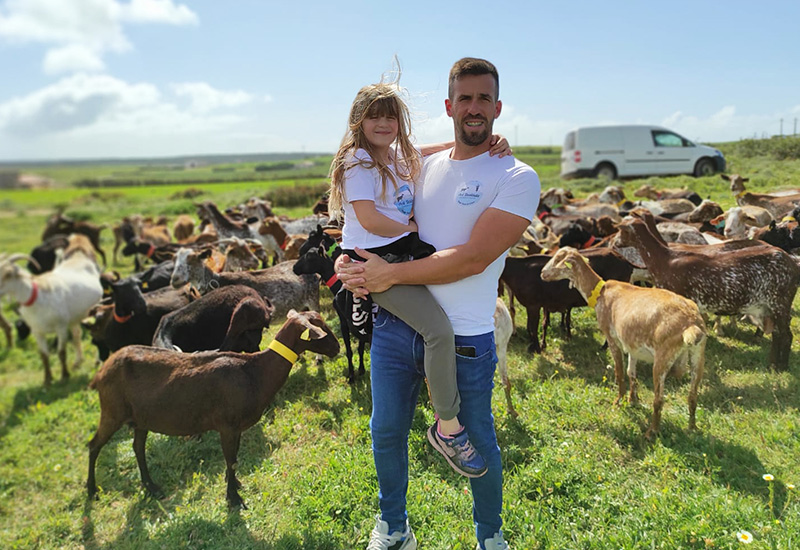
Roberto worked for years as a paid member of the Vila do Bispo Bomberios (fire service). He could have continued and earnt a good wage and had an uncomplicated life if it weren’t for his passion for goats!
His maternal grandparents kept goats and his childhood evokes happy memories of helping on the farm with the 200 goats and watching his grandmother produce cheese for the family, friends and neighbours using a traditional recipe passed down through generations.
With two children to support, his mother needed to find more lucrative work to support the family. So the family inheritance skipped a generation to Roberto, who has been loaned four hectares of land belonging to his grandparents so he could start rearing goats. His mother and grandmother, however, have given him enormous encouragement and are immensely proud of him for wishing to continue the family tradition. They gave him financial support to start his farm, while Roberto built a house on the site where he lives.
In the circle of life on the farm, Roberto needs five male goats; others are sold as he is not interested in meat production. The females feed their kids for two months, then Roberto continues milking them until he wants them to get pregnant again. I am shown an enclosure where the newborn kids are kept safe in a bed of hay within easy reach of their mothers. The little newborns look like endearing fluffy toys as they stare up at me with their inquisitive faces.
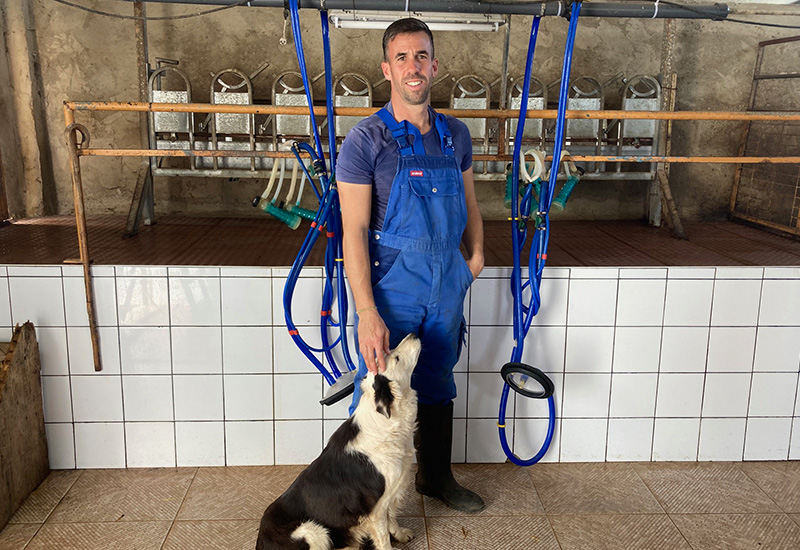
Roberto constructed the stables where the goats are brought to be milked himself. I was shown around the area where the goats are herded to a milking platform. A tasty meal of pellets in a trough keeps the goats occupied while they are secured and milked. Roberto only has help from one man who comes for a few hours, but the rest he does himself, along with a couple of shifts at the fire station every fortnight to pay a few bills. Roberto explains that new regulations mean he needs to partition the shed from the milking area and acquire more modern machinery. It may also mean that the process becomes quicker as it now takes one and a half hours each morning and evening to milk around 60 goats. In order for him to become more efficient, he now needs to create partitions between the females that are milking and those that aren’t.
The most efficient method of milk production would be to keep the goats in a shed, feeding them with pellets and giving them no exercise, which means they produce more milk. However, Roberto wishes to manage goats traditionally, producing more ‘organic’ milk. He grazes the goats on the land, walking with them as his faithful dog keeps them in check. Neighbouring landowners give permission for them to graze on their land. As we tour the farm, Roberto’s love for these animals is clear – as they sidle up to him and nuzzle into him he strokes them fondly. As we approach a field, he spots a newborn kid with its umbilical cord still attached. He lifts it aloft to show it to me and I am struck with the euphoria and wonder of new birth that must be a driving force for Roberto.
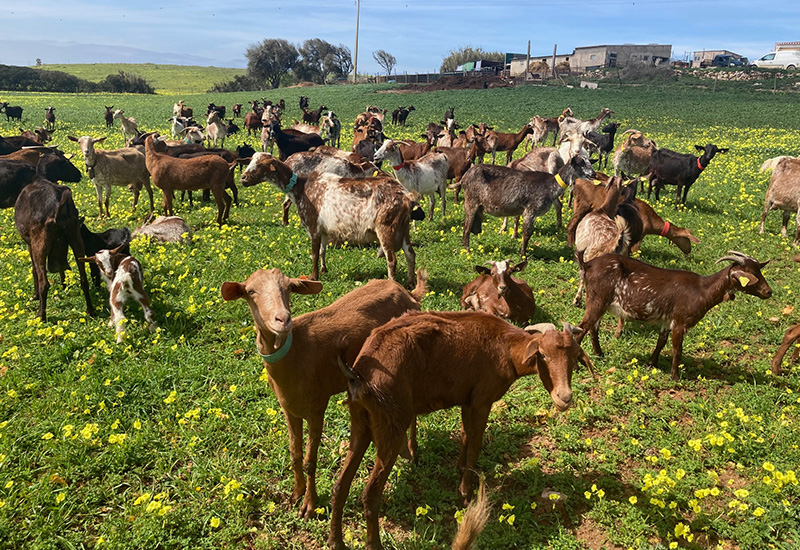
Roberto has created his own cheese factory in an annexe of his grandmother’s house in Sagres. The process requires several stages when the milk arrives. It is first pasteurised at 90ºc. The temperature is then lowered and salt is added. Another more novel ingredient is then used that makes this cheese completely authentic to the Vila do Bispo region – thistle rennet.
Thistle rennet was traditionally used in Spain and Portugal to make small-scale, artisanal cheese with sheep and goat milk. Since ancient times bull thistles have been collected from the countryside to be used in cheese production. Once they are thoroughly dried, the stamens or the purplish threads from each head would be picked off and stored in a clean, completely dry jar with an airtight lid. Warm water is then added, before the liquid is strained off. The resulting mixture contains enzymes which solidify the cheese. This was used in place of animal rennet, which was traditionally the stomach lining of young calves.
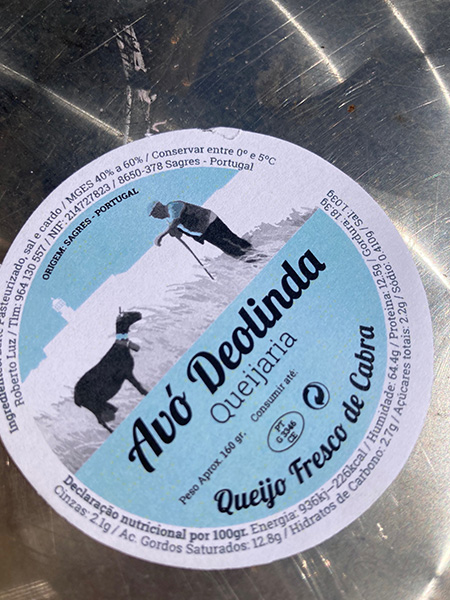
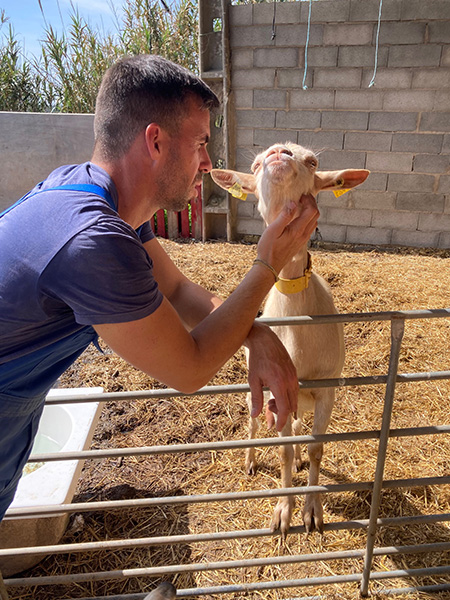
Roberto sticks to this tradition rather than using a manufactured solidifier. Using the same techniques as his forefather is a source of pride to Roberto, but it is also a very time-consuming labour of love.
The resulting creamy, soft cheese is served in many restaurants in Sagres and Vila do Bispo and the local market. However, Roberto is now looking to open a permanent space in the market where he will have his factory and sell the cheese direct to the public, allowing people also to experience the process of authentic regional cheese.
Now Roberto is happy to be bringing his own daughter up with his goats! He shares equal custody with his ex-partner, so she stays with him every other week and hopefully will share the passion of her forefathers. As far as Roberto knows, all of his ancestors tended goats as far back as anyone remembers.
As we sit chatting with Roberto’s collie looking up at him adoringly and his goats in the field behind us, it is clear to see that this way of life runs in Roberto’s veins. He could easily choose an easier lifestyle, but as the only remaining cheese-producing goat farmer left in this area, this way of life could be lost forever if he did not continue.
Although Roberto has rejected financial help from friends who would like to help him make the upgrades to the farm that is now compulsory, they are appealing for support to keep this tradition alive. You can support Roberto by visiting his new factory outlet shop in Sagres market, which he hopes will open in June.
Roberto’s story really got my goat! Whether you wish to support his enterprise or just enjoy reading about it, we can all applaud the dedication and commitment of this inspiring man who wishes to live as his ancestors did – in the company of goats!
www.instagram.com/roberto.luz85
www.instagram.com/queijariaavodeolinda
Photos ©Elien Van den Brande
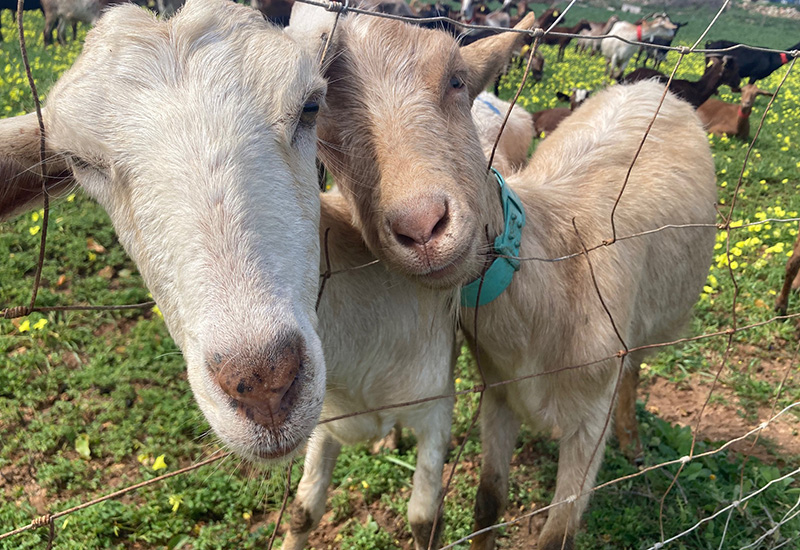
Adopt a Goat
If you wish to help continue the tradition of natural goat farming in Vila do Bispo, Roberto and his friends are inviting you to adopt a goat. You will receive a picture of your new four-legged friend, a supply of the cheese they produce, and an invitation to the cheese factory in Sagres.
For more information, please contact:
